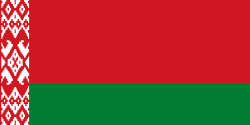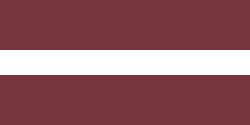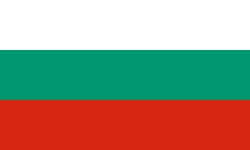Ireligiozita

Ireligiozita je absence náboženského vyznání, nezájem, odmítnutí nebo nepřátelství vůči němu. Pokud se charakterizuje jako nezájem o náboženství, zahrnuje apateismus. Pokud se charakterizuje jako odmítnutí náboženského vyznání, zahrnuje otevřený ateismus, odpadnutí od víry a sekulární humanismus. Pokud se charakterizuje jako nepřátelství vůči náboženství, zahrnuje antiklerikalismus, antiteismus a antináboženství. Pokud se charakterizuje jako absence náboženské víry, může zahrnovat deismus, implicitní ateismus, agnosticismus nebo pandeismus. Ireligiozita může zahrnovat formy teismu, záleží na náboženském kontextu, proti kterému se definuje. Novým fenoménem je SBNR.
Při sčítání lidu také mohou „Bez náboženství“ uvést v kolonce Víra lidé, kteří nevyznávají žádné z formulářem nabízených náboženství pokud sčítací formulář nemá možnost vypsání libovolné odpovědi. Tato praxe zkresluje výsledky u občanů, kteří vyznávají náboženství jiná, například pohanství nebo jediismus, anebo jsou věřícími bez církevní příslušnosti. Tuto možnost je třeba brát v potaz při práci se statistikami a dotazníky ohledně víry obecně, jelikož uvedení nepravdivé odpovědi zapříčiňuje nepřesný obraz skutečnosti ve výsledcích daného dotazování a může vést k chybným závěrům na jejich podkladě.
Podle sčítání z roku 2012 bylo 36 % světové populace bez náboženského vyznání a mezi lety 2005 a 2012 podíl věřících klesl o devět procentních bodů.[2]
Následující tabulka udává procento populace země, které udává počet lidí bez vyznání (od nejvyššího procenta po nejnižší).
Reference
V tomto článku byl použit překlad textu z článku Irreligion na anglické Wikipedii.
- ↑ Religious Composition by Country, 2010–2050 [online]. 2 April 2015 [cit. 2020-04-27]. Dostupné online. (anglicky)
- ↑ Global Index of Religiosity and Atheism [online]. WIN-Gallup International, 27 July 2012 [cit. 2012-08-24]. Dostupné v archivu pořízeném dne 2012-09-06.
- ↑ Dostupné v archivu pořízeném z originálu dne 2017-03-09.
- ↑ a b c d e f g h Zuckerman, Phil. "Atheism: Contemporary Rates and Patterns", from the Cambridge Companion to Atheism, edited by Michael Martin, University of Cambridge Press, 2007. www.pitzer.edu [online]. [cit. 24-03-2015]. Dostupné v archivu pořízeném dne 12-06-2009.
- ↑ Knippenberg, Hans "The Changing Religious Landscape of Europe" edited by Knippenberg published by Het Spinhuis, Amsterdam 2005 ISBN 90-5589-248-3, page 92
- ↑ a b c d e f g h i j k l m n o p q r s t u v w x y z aa ab ac ad ae af ag ah ai aj ak al Dentsu Communication Institute Inc., Research Centre for Japan (2006)(japonsky)
- ↑ [1]
- ↑ Albania [online]. State.gov, 2006-09-15 [cit. 2011-02-04]. Dostupné online. US Department of State - International religious freedom report 2006
- ↑ L'Albanie en 2005. www.membres.lycos.fr [online]. [cit. 24-03-2015]. Dostupné v archivu pořízeném dne 03-03-2009.
- ↑ Adherents.com [online]. Adherents.com [cit. 2011-02-04]. Dostupné v archivu pořízeném dne 2018-12-26. Some publications
- ↑ UK National Statistics Bureau (2011 census)
- ↑ Global Index Of Religion and Atheism [online]. Redcresearch.ie [cit. 2011-11-01]. Dostupné v archivu pořízeném dne 2012-10-16. Publications are taken from Gallup
- ↑ Adherents.com [online]. Adherents.com [cit. 2011-02-04]. Dostupné v archivu pořízeném dne 2018-12-26. Some publications
- ↑ According to figures compiled by the South Korean National Statistical Office. 인구,가구/시도별 종교인구/시도별 종교인구 (2005년 인구총조사) [online]. [cit. 2006-08-23]. Dostupné v archivu pořízeném dne 08-09-2006.
- ↑ a b redcresearch.ie [online]. [cit. 24-03-2015]. Dostupné v archivu pořízeném dne 16-10-2012.
- ↑ http://www.stats.govt.nz/Census/2013-census/data-tables/total-by-topic.aspx
- ↑ Pew: Kdo jsou Američané „bez vyznání“? : Náboženský infoservis, 19. 2. 2024
- ↑ 96F0030XIE2001015 - Religions in Canada [online]. 2.statcan.ca [cit. 2013-05-08]. Dostupné online. Canada 2011 census
- ↑ [2] Socialogical Research Centre, January 2012
- ↑ "Census shows result of mining boom, with increased cost of housing and higher wages", PIA AKERMAN, The Australian, 21 June 2012.
- ↑ Ständige Wohnbevölkerung ab 15 Jahren nach Religions- / Konfessionszugehörigkeit, 2012 [Statistics]. Neuchâtel: Swiss Federal Statistical Office, 2012 [cit. 2014-04-05]. Dostupné v archivu pořízeném dne 2012-01-06. (German, French, or Italian)
- ↑ Table Of Statistics On Religion In The Americas [online]. Prolades.com, April 2001 [cit. 2011-02-04]. Dostupné online. Gallup-Argentina survey
- ↑ Census 2010; Sistema IBGE de Recuperação Automática SIDRA [online]. [cit. 2013-06-29]. Dostupné online.
- ↑ This is Ireland. Highlights from Census 2011, Part 1 [online]. March 2012 [cit. 2013-06-29]. Dostupné v archivu pořízeném dne 2013-02-01.
- Secular Sunday #14 – Census Special [online]. April 2012. Dostupné online.
- ↑ Archivovaná kopie [online]. สำมะโนประชากรและเคหะ พ.ศ. 2543 (2000 census), National Statistical Office of Thailand [cit. 2013-10-26]. Dostupné v archivu pořízeném dne 2013-07-28. (thajsky)
Externí odkazy
 Obrázky, zvuky či videa k tématu bez vyznání na Wikimedia Commons
Obrázky, zvuky či videa k tématu bez vyznání na Wikimedia Commons
Média použitá na této stránce
Vlajka České republiky. Podoba státní vlajky České republiky je definována zákonem České národní rady č. 3/1993 Sb., o státních symbolech České republiky, přijatým 17. prosince 1992 a který nabyl účinnosti 1. ledna 1993, kdy rozdělením České a Slovenské Federativní republiky vznikla samostatná Česká republika. Vlajka je popsána v § 4 takto: „Státní vlajka České republiky se skládá z horního pruhu bílého a dolního pruhu červeného, mezi něž je vsunut žerďový modrý klín do poloviny délky vlajky. Poměr šířky k její délce je 2 : 3.“
Finská vlajka
The Flag of Iceland.
- Horizontal aspect ratio: 7:1:2:1:14;
- Vertical aspect ratio: 7:1:2:1:7.
This is the national flag of Belgium, according to the Official Guide to Belgian Protocol. It has a 13:15 aspect ratio, though it is rarely seen in this ratio.
Its colours are defined as Pantone black, Pantone yellow 115, and Pantone red 032; also given as CMYK 0,0,0,100; 0,8.5,79,0; and 0,94,87,0.Při zobrazení tohoto souboru lze snadno přidat orámování
Flag of Canada introduced in 1965, using Pantone colors. This design replaced the Canadian Red Ensign design.
Flag of Australia, when congruence with this colour chart is required (i.e. when a "less bright" version is needed).
See Flag of Australia.svg for main file information.Used color: National flag | South African Government and Pantone Color Picker
| zelená | rendered as RGB 0 119 73 | Pantone 3415 C |
| žlutá | rendered as RGB 255 184 28 | Pantone 1235 C |
| červená | rendered as RGB 224 60 49 | Pantone 179 C |
| modrá | rendered as RGB 0 20 137 | Pantone Reflex Blue C |
| bílá | rendered as RGB 255 255 255 | |
| černá | rendered as RGB 0 0 0 |
Při zobrazení tohoto souboru lze snadno přidat orámování
Flag of Portugal, created by Columbano Bordalo Pinheiro (1857-1929), officially adopted by Portuguese government in June 30th 1911 (in use since about November 1910).
Zelený pruh má znázorňovat většinové katolické obyvatelsto Irska, oranžový pruh reprezentuje protestantskou menšinu a bílý pruh uprostřed znázorňuje mír a harmonii mezi nimi.
Flag of Iran. The tricolor flag was introduced in 1906, but after the Islamic Revolution of 1979 the Arabic words 'Allahu akbar' ('God is great'), written in the Kufic script of the Qur'an and repeated 22 times, were added to the red and green strips where they border the white central strip and in the middle is the emblem of Iran (which is a stylized Persian alphabet of the Arabic word Allah ("God")).
The official ISIRI standard (translation at FotW) gives two slightly different methods of construction for the flag: a compass-and-straightedge construction used for File:Flag of Iran (official).svg, and a "simplified" construction sheet with rational numbers used for this file.
The national flag of Kingdom of Thailand; there are total of 3 colours:
- Red represents the blood spilt to protect Thailand’s independence and often more simply described as representing the nation.
- White represents the religion of Buddhism, the predominant religion of the nation
- Blue represents the monarchy of the nation, which is recognised as the centre of Thai hearts.
Autor: Pharexia, Licence: CC BY-SA 4.0
Countries by percentage of Unaffiliated–Pew Research 2010.svg






























































